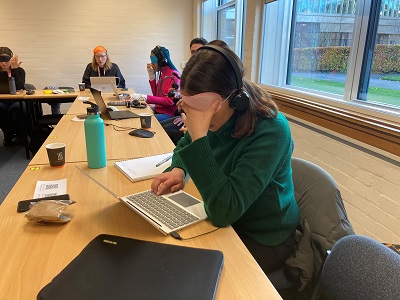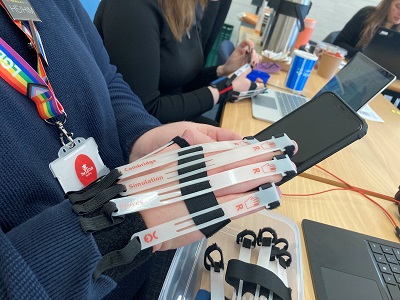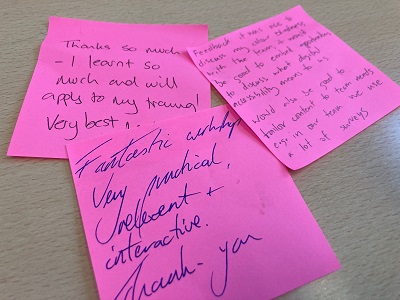Accessibility Workshop with Student Engagement Team
30th November 2022 by Tharindu Liyanagunawardena
Last Tuesday, I ran the first accessibility awareness workshop at the University of Reading with the Student Support and Engagement team.
My colleague, Mira, was also there to help me facilitate the workshop. I planned the workshop to be delivered in person with a lot of activities for the participants to take part in. With twelve people in the room, it felt like the pre-COVID time when we used to have many in-person activities and meetings, though sanitising wipes and hand gel was there as a reminder of what we all have been through.
We first looked at the importance of accessibility. I like using the video Experiences of Students with Disabilities created by WebAIM in my workshops. Though it was created a while ago, this short video provides a good insight into students’ lived experiences. The video shows students using various assistive technologies and as the first workshop activity, the participants were given the chance to use Windows Narrator, the built-in screen-reading app for Windows, to get exposure to assistive technologies.

Then we discussed the legal landscape, especially the difference between providing reasonable adjustments under the Equality Act and the more proactive nature of the Public Sector Bodies (Websites and Mobile Applications) Accessibility Regulations. We also looked at web content accessibility guidelines and how detailed they are.
The next part of the workshop focused on what we can do to make content more accessible. We looked at the use of colour. Sufficient colour contrast between foreground and background is important to make text easily readable. WebAIM colour contrast checker can be used to check colour contrasts and it helps to interpret the colour contrast according to the current accessibility guidelines. This is a short interactive, e-learning activity on Accessibility: Colour Contrast Checking. We also talked about colour vision deficiency and the importance of not using colour alone to differentiate information.
I used a lot of video clips to show how screen readers would read accessible and inaccessible content. I used this to demonstrate document structure, tables, and alternative text. When you see how assistive technologies make use of the metadata, it is easier to engage with the accessibility good practices because you know what you do makes a difference.
As the final activity participants in groups looked at a Microsoft Word document ladened with accessibility issues and tried to resolve the problems and make it accessible. We had a lot of time to discuss various issues colleagues have seen over time as well as to refer to the daily experiences of people with hidden disabilities.
At the workshop, we also had Cambridge simulation gloves and Optima Simulation Specs so that the participants could experience how some of the mobility/dexterity and visual disabilities can affect people in their daily lives.


We got very good feedback and the pre and post-survey asking specific questions about accessibility awareness showed a marked increase in awareness. I am already looking forward to the next accessibility workshop!

The accessibility workshop was fantastic for my professional development. I gained a much greater understanding of the topic and how it relates to my individual work context. Rather than it feeling like a complicated added responsibility, I now see accessibility as a mindset that will benefit everyone from students to colleagues. It was very interactive and I have walked away with easy-to-execute practical examples and strategies.
